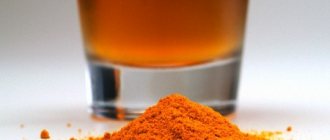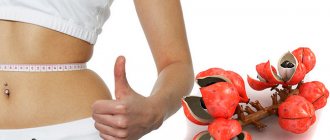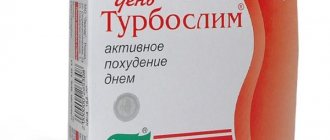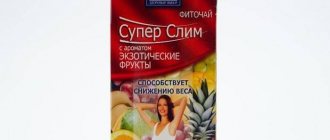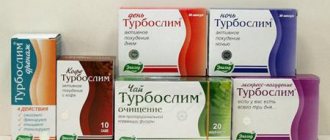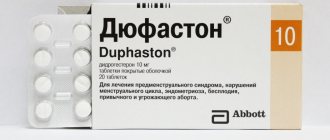Latin name: Equisetum arvense
The dinosaur-surviving horsetail is often called a “living fossil.” The ancestors of this plant were gigantic in size and dominated the earth before the advent of seed, flowering crops. The Romans called it “the hair of the Earth.”
Horsetail is a species of perennial herbaceous plants of the genus Horsetail, family Equisetaceae.
It has many colorful folk names:
- ponytail,
- water pine,
- nursery,
- padihair,
- panicle,
- grass mop,
- pusher, etc.
Horsetail - botanical description
The growth and development of horsetail occurs in two stages: with the onset of spring, erect, brownish shoots first appear, which end in a spore-bearing spikelet. The spores ripen in early summer. Tiny and light, they easily travel long distances with the help of the wind. As soon as their reproductive function is completed, the fruiting stems wither and are replaced by sterile stems, very branched and taller than the spring shoots of horsetail.
The height of the stems reaches 50 cm, they are separated by nodes, reminiscent of a pine branch. A blackish ring around each node breaks up the overall bright green coloration.
Vegetative shoots of horsetail are hollow, smooth, and are distinguished by the presence of nodes on which there are serrated sheaths (reduced leaves). They are formed by reduced leaves fused together, which do not photosynthesize and grow in whorls of 6–12.
The horsetail leaf is modified and is absent as an independent organ.
The branches are hard and rough to the touch. The rough texture is due to the presence of large amounts of silica in the plant.
The horsetail root consists of deep-lying creeping branches with black tubers on them. Tubers serve as a reproductive organ and store a supply of essential nutrients. It is this reserve that allows horsetail to “colonize” new lands, growing aggressively. It is extremely difficult to eradicate it. Therefore, horsetail in the garden is a “headache” for summer residents.
How does horsetail affect the body?
The plant has a strong diuretic effect. That is why when you use it you can lose extra pounds. In addition, it should be noted that waste and toxins leave the body along with excess fluid. But, it should be understood that during weight loss, adipose tissue does not disappear. Therefore, the lost kilograms will quickly return.
Studies have shown that horsetail, or rather a decoction prepared from the plant, is capable of removing toxins from the body, in particular lead.
The herb contains silicon compounds. They help normalize the body's metabolic processes, improve the condition of blood vessels and mucous membranes.
Types of horsetail
Horsetail has more than 20 species:
Riverside horsetail (Equisetum fluviatile)
Perennial, grows along the banks of stagnant bodies of water. The stems are not branched or weakly branched, soft, hollow, ribbed. Leaf whorls are cylindrical. The main axis and lateral branches end in a spikelet. Contains small amounts of nicotine, palustrin and aconitic acid.
Horsetail (Equisetum palustre)
Habitat: swamps, meadows, swampy forests. Angular-furrowed stems reach 40 cm. The branches are unequal, arched inward. Contains palustrin, nicotine, equisetonin, flavonoids, silica (10%).
Horsetail (Equisetum pratense)
Sporiferous and vegetative shoots develop simultaneously. After sporulation, the stem does not die, but turns green and develops lateral branches. The branches are simple, horizontal or drooping, up to 8 cm long. There are no branches in the lower part of the stem.
Horsetail (Equisetum sylvaticum)
The height of the perennial is 25-60 cm. Habitat is clearings, forests, often coniferous. The sheaths are bell-shaped, with reddish teeth. The complex structure of horsetail branches gives the plant an “openwork” appearance.
Wintering horsetail (Equisetum hyemale)
Shallow, coastal, evergreen crop. Forms bunches of hard, thick shoots with a sharp spikelet.
An interesting property of horsetail is the absorption of minerals contained in the soil, including gold, by concentrating them in its tissues.
Useful properties for weight loss
Weight loss occurs due to two important properties of this plant. Horsetail is an excellent natural diuretic. Together with urine, it removes all excess fluid from the body, resulting in weight loss. Feeling a lack of water, the body begins to more actively break down accumulated fats.
In addition to the fact that all excess liquid leaves, harmful compounds and toxins leave the body along with it. Here, another ability of horsetail comes into play in the fight against extra pounds - improving metabolism. Cleansing itself of toxins, the body begins to work better, including absorbing beneficial components from food.
But you should be prepared for the fact that without additional effort, the lost weight will make itself felt again. For effective weight loss, it is not enough to get rid of fluid, which is what horsetail provides. These are the kilograms that return the fastest.
Chemical composition of horsetail
Horsetail contains some extremely rare minerals and unique organic compounds. Its chemical composition is rich and varied:
- alkaloids (nicotine, palustrine, dimethylsulfone);
- silicic acid (up to 25%);
- flavonoids (luteolin, apigenin, quercetin);
- vitamins, minerals, trace elements;
- essential oils;
- organic acids (malic, oxalic, aconitic);
- saponin (equisetonin);
- resin, bitterness.
Medicinal properties of horsetail
The medicinal properties of horsetail are based on the presence of silica and antioxidant compounds in its composition. They act both alone and together to achieve the greatest effect in treatment.
Horsetail is a well-known diuretic plant that can increase urine secretion by 30%. This makes it ideal for those suffering from arthritis and gout, as well as kidney, bladder and kidney stone problems.
Medicine is known for its anti-inflammatory, cleansing, tonic, astringent, antiseptic, diuretic, anthelmintic, antimicrobial and hemostatic properties.
Rheumatoid arthritis, osteoporosis
Rich in silica and mineral salts, horsetail has a reputation as a bone and connective tissue remineralizer. Silica deficiency precedes calcium loss, which causes our bones to become brittle. Silica is of paramount importance for our connective tissues - cartilage, muscles and skin. The combination of silica, mineral salts and equisetonin provides the antirheumatic effect of horsetail.
Analgesic and anti-inflammatory compounds neutralize the symptoms of arthritis.
Wounds and burns
Horsetail preparations accelerate wound healing and regeneration of damaged tissue. Silica helps seal the wound, and flavonoids prevent infection.
Decreased immunity
The antibacterial and antiseptic properties of horsetail can protect against foreign pathogens and substances that can compromise our immune system.
Cold, cough
If you suffer from respiratory problems and frequent colds, horsetail tea may be a great solution. Acting as an expectorant, it removes mucus and phlegm where bacteria can settle and grow, while also strengthening the immune system and reducing inflammation.
Enuresis, cystitis
Horsetail increases the tone of the bladder walls, making them less permeable to bacteria. It would seem that an herb that increases the need to urinate would aggravate it, when in fact the healing, strengthening and tonic effects of horsetail actually improve the condition. The British Directory of Herbal Medicines of the last century (Potter's Cyclopedia, 1915) recommends horsetail for cystitis, urethritis and prostatitis.
Diabetes
Horsetail has antidiabetic properties. Studies on rats confirmed the hypoglycemic effect of the extract. Weight loss in diabetes has also been observed to stop.
Atherosclerosis
Silicon affects lipid metabolism. Therefore, horsetail prevents the formation of fatty deposits in the arteries. Europeans have been using horsetail for the treatment of atherosclerosis for many years.
Many people use horsetail for weight loss. But there is no clinical data confirming its effectiveness in the fight against excess weight.
Dementia, poor memory, insomnia
The effects of horsetail on the brain are just beginning to be discovered medically. Its complex antioxidant composition may protect the brain and improve cognitive function. In old age, antioxidant defenses weaken, which can cause dementia, Alzheimer's disease and Parkinson's disease. Powerful flavonoid antioxidants in horsetail (isoquercetin) enhance cognitive function and improve memory, increasing sleep duration in people suffering from insomnia. The flavonoid isoquercetin acts as a mild and safe sedative.
Asthma
Histamine narrows the airways in asthma, causing difficulty breathing and mucus buildup. Horsetail extract blocks the action of histamine and relaxes the respiratory tract.
Horsetail is an effective natural diuretic.
In modern medicine, any diuretic is supplemented with potassium to replenish the loss of potassium in the urine. Horsetail, however, has its own built-in way of helping the body maintain potassium levels. In a normal diet, the ratio of potassium to sodium is about 2:1, but in horsetail it is 150:1, meaning that any potassium lost due to its diuretic effect is replaced naturally.
Possible harm and contraindications
Not everyone can use horsetail for weight loss. There are a number of absolute contraindications, in the presence of which the plant should be excluded from the diet:
- inflammatory processes in the kidneys, including nephritis, nephrosis;
- the use of medications aimed at reducing blood pressure or urine excretion;
- the period of bearing and feeding a child;
- uterine bleeding resulting from termination of pregnancy;
- childhood.
Indications and contraindications for the use of horsetail for weight loss
The medical community generally has a positive attitude towards the use of horsetail for weight loss and treatment. But doctors warn that independent use of this plant without prior consultation with a specialist can lead to complications such as:
- dehydration of the body;
- the occurrence of allergies;
- formation of salt stones in the kidneys.
To ensure that horsetail has only a beneficial effect, it is better to first talk to your doctor. He determines the individual dose. After all, if you abuse the plant, you can get poisoned, as it contains toxic substances.
Watch the video about the beneficial properties of horsetail:
Pharmaceutical preparations based on horsetail
Horsetail is sold in pharmacies in the form of crushed raw materials or filter bags.
The pharmaceutical industry produces dry and liquid extracts of horsetail herb.
It is present in the drug “Traskova Anti-Asthmatic Medicine”.
Horsetail is one of the active substances of the diuretic "Fitolysin" - a paste for preparing a suspension.
Horsetail grass is a component of various herbal preparations: kidney, heart; balms for joints; phyto shampoos, medicinal sprays to strengthen hair.
For ease of use, horsetail is available in capsules.
The use of horsetail in folk medicine
The use of horsetail in traditional medicine has a long history. The preparations are decoction, infusion, tincture, tea, ointment, powder and even plant juice.
Horsetail decoction
- 4 tbsp. spoons of dry grass;
- 1.5 liters of cold water.
Pour water over the raw materials and put on fire. Bring to a boil, simmer for 5-7 minutes, remove from heat. Cool, strain.
A decoction of horsetail is used for compresses, baths for sweaty feet, hemorrhoids, for the treatment of wounds, skin problems, and hair washing.
Horsetail infusion
- 2 tbsp. spoons of dry grass;
- 200 ml hot water.
Place in a water bath and heat for 20 minutes. Remove from heat, cool, strain.
The infusion will help with diabetes, atherosclerosis, and is good for the liver. Dosage – half a glass three times a day 15 minutes before meals.
Alcohol tincture of horsetail
Horsetail tincture is prepared from herbs and alcohol.
Pour 100 g of raw material into 500 ml of vodka. Seal tightly and leave in a dark place for 10 days. After this period, pour the tincture into a dark glass container and store in a cool place.
Externally, the tincture can be used to strengthen nails and hair. Orally - for uterine bleeding, to improve heart function, remove toxic substances from the body.
Take 1 teaspoon per 0.3 glass of water 2-3 times a day.
Horsetail tea
Pour 1 teaspoon with 1 glass of boiling water, leave for 15 minutes, strain and drink warm. If desired, this tea can be sweetened with honey or a small amount of sugar.
Tea will provide quick relief for headaches, fatigue, cystitis, and colds.
Horsetail ointment
2 tbsp. Grind tablespoons of dry herbs in a blender until powdered. Mix with Vaseline or some neutral cream.
The ointment is suitable for the treatment of wounds, acne, bruises, abrasions.
Horsetail - EQUISETUM ARVENSE L.Sem. horsetails - Equisetaceae
DESCRIPTION. A perennial herbaceous spore plant with a long, creeping, branched rhizome, forming thin roots and swollen nodules at the nodes. It has shoots of two kinds: spore-bearing and assimilation, growing at different times. Spring spore-bearing shoots are shorter, thicker, juicy, brown-pink, in nodes with jagged, bell-shaped brown sheaths, ending in an oval-cylindrical spore-bearing spikelet.
It consists of hexagonal corymbose sporolists bearing sac-like containers on the inside - sporangia. Spores developing in sporangia serve for asexual reproduction of horsetail. They are greenish, spherical with 4 spirally twisted appendages. During germination, some of them give rise to male, others to female shoots, representing the sexual generation of horsetail; of these, after fertilization, an asexual generation develops - the sporophyte, or the horsetail itself.
Spore-bearing shoots, after the spores ripen, quickly die off and are replaced by summer assimilating shoots growing from the same rhizome. They are rigid, erect, grooved, segmented, branched almost from the base, up to 50-60 cm high. The branches are directed obliquely upward, unbranched, tetrahedral (less often pentagonal), segmented, without a cavity, collected in whorls. The leaves are underdeveloped, transformed into toothed sheaths surrounding the stem and branches at the nodes. The sheaths of the stems are black-brown, 4-8 mm long, with triangular-lanceolate teeth, often fused together in 2 (3); the sheaths of the branches are green, membranous, with 4-5 long-pointed, deflected teeth. At the base of the branches there are small brown sheaths, which, when the branches are removed, are not torn off from the stem, but remain in the form of vaginal whorls. The spores ripen in April-May.
RAW MATERIALS. The medicinal raw material is the herb horsetail (Herba equiseti), consisting of stems and twigs of summer sterile, assimilating shoots up to 30 cm long. The raw material is grayish-green in color, has no odor, and has a slightly sour taste.
DISTRIBUTION AND PROCESSING. Horsetail is found almost everywhere. Widely distributed in the Caucasus, where it grows mainly in places of good moisture. Usually forms thickets of small area, but is common.
Raw materials are collected in mid-summer. The upper, branching parts of the green shoots of horsetail are quickly dried in dryers or well-ventilated areas.
CHEMICAL COMPOSITION. Horsetail grass contains up to 5% saponin equisetonin, alkaloids (nicotine, palustrine, trimethoxypyridine, dimethyl sulfone), flavonoids (equisetrin, isoquercitrin and 5-glucoside luteolin), carotene, organic acids (aconitic, malic, oxalic, ascorbic), fatty oil , resins, tannins, bitterness and silicic acid.
APPLICATION. Horsetail herb is used as a diuretic for heart and other diseases accompanied by congestion, as well as for inflammatory processes in the bladder and urinary tract. In addition, it is used as a hemostatic agent for hemorrhoidal and uterine bleeding. It is also recommended for some forms of tuberculosis associated with impaired silicate metabolism.
In folk medicine, horsetail herb is recommended for cleansing the liver, be careful in the presence of sand and kidney stones, gout, sciatica, rheumatism, hemorrhoids, arteriosclerosis, blood pressure; as a remedy that has an astringent, hemostatic, diuretic, and antifungal effect.
RECIPES
An infusion is used internally for diseases of the genitourinary system.
(Brew 4 teaspoons of crushed horsetail with 2 cups of boiling water (the dose is for 2 days); drink in sips.
A decoction is used externally
, prepared at the rate of 1 tbsp. spoon of raw materials in 1 glass of water, boiled over low heat for 30 minutes. It is used for difficult-to-heal wounds and abscesses (compresses, baths), for rinsing the mouth with inflammation of the mouth and throat, and for rinsing with nosebleeds.
Horsetail mixed with shepherd's purse is successfully used externally and internally for heavy menstruation and with juniper berries for bloody vomiting.
Decoction:
Pour 50 g of raw material into a glass of water and leave for 40 minutes. Take 0.5 cups 2 times a day. Or: 1 tbsp. Boil a spoonful of chopped herbs in 1 cup of boiling water, leave for 20 minutes, strain. Take 1 tbsp. spoon 4 times a day as a diuretic.
Tincture:
Infuse 20 g of herb in 1 liter of white wine for 8 days. Take 10-15 g in the morning on an empty stomach as a hemostatic agent.
Ointment:
Mix 1 part of the extract or condensed decoction with 4 parts of cow butter or petroleum jelly and use it to treat wounds and ulcers.
Horsetail is contraindicated for kidney inflammation!
USE IN NUTRITION
Juicy young spore-bearing shoots of horsetail are consumed fresh, lightly boiled or stewed. They are used to prepare soups, okroshka, casseroles, purees and pie fillings.
Soup from horsetail shoots
0.5 liters of broth, 2 potatoes, 1 carrot, 1 onion, 50 g horsetail shoots, dill, 1 tbsp. spoon of sour cream, 1 boiled egg, salt.
Add potatoes, carrots, onions to the meat broth and cook until almost done. Then add finely chopped horsetail shoots, salt and cook. Before serving, season with sour cream, dill, and egg.
Cottage cheese casserole with horsetail
200 g cottage cheese, 1 boiled egg, 100 g young spore-bearing shoots of horsetail, 2 tbsp. spoons of sour cream, 1 teaspoon of butter, salt.
Mix the cottage cheese with chopped egg, finely chopped horsetail shoots, add salt, place on a baking sheet greased with butter, pour in sour cream and bake in the oven.
Pie with horsetail stems
Prepare and beat the dough.
Finely chop young horsetail stems, place on a baking sheet greased with margarine, pour over the prepared dough and bake in the oven.
Serve with tea, coffee, milk, kefir, fermented baked milk, yogurt.
For the dough: 1 glass of milk, 4 glasses of flour, 1 glass of sugar, 1 egg, salt.
Salted horsetail shoots
Wash young spore-bearing stems of horsetail, place tightly in an enamel or glass container, add dill, black currant leaves, horseradish roots, and garlic. Pour cold brine (1 tablespoon of salt per 1 liter of water). Apply wooden pressure and put it in the cold. Consume after 3-4 weeks.
Serve with main courses or use as a dressing for soups and cabbage soup.
Traditional medicine recipes
In traditional medicine recipes, horsetail acts in combination with other herbs.
Inflammatory diseases of the kidneys and urinary tract
- 1 tbsp. a spoonful of horsetail;
- 1 tbsp. spoon of birch leaves;
- 2 cups (400 ml) boiling water.
Mix herbs and pour boiling water. Leave in a sealed container until completely cooled. Strain and drink half a glass 3 times a day before meals.
Gallstones
- 1 teaspoon horsetail;
- 1 teaspoon of wormwood;
- 1 cup boiling water.
Pour boiling water over the herbs, leave in a water bath for 10 minutes, remove from heat, and cool. You need to drink horsetail one glass half an hour before meals in the morning and evening. The course of treatment is 7 days. After a 10-day break, the course can be repeated.
Enuresis
Brew 1 teaspoon of horsetail with boiling water in a small cup (150 ml). Let it brew and drink warm 15 minutes before meals 3 times a day. Course – 7 days.
On a note. It is better to brew horsetail not with boiling water, but with hot water.
Features of the use of horsetail for women, men and children
The beneficial properties of horsetail are used in the treatment of purely male or female diseases. Horsetail is a very valuable plant for women.
- The hemostatic activity of horsetail components is effective for the treatment of heavy and painful periods.
- Silica is needed for the formation of collagen, which forms the basis of the connective tissue of the body and ensures its strength and elasticity. Cosmetologists recommend using horsetail on the face.
- A cup of horsetail tea is a good prevention of osteoporosis, which often affects women during menopause.
Horsetail is useful for men as a possible treatment for benign enlarged prostate gland. It relieves swelling and cleanses the prostate.
Children may take horsetail preparations for bedwetting or diarrhea.
Horsetail for adenoids, judging by the reviews, shows good results. For treatment, you need to instill an aqueous infusion of the herb into the child’s nose - 5 drops in each nostril three times a day. As improvement occurs, the dosage can be reduced to twice, then once a day.
Sebastian Kneipp (German healer, priest, 19th century) recommends that everyone over 40 years old drink a cup of horsetail tea every day. Tea maintains the elasticity of blood vessels and strengthens memory.
How to drink for weight loss
Horsetail has an effect on weight loss, but it must be taken correctly. There are several recipes for decoctions with different concentrations of this herb. While taking it, you need to monitor your diet: eat less sweets and starchy foods. Meals should be balanced, but low in carbohydrates. Preference should be given to protein products. Be sure to eat meat, eggs, fish, poultry, and milk.
An approximate menu to follow when drinking the infusion:
- breakfast: omelette with vegetables, whole grain bread, cheese, green tea;
- snack: fruit or yogurt;
- lunch: soup, cutlets, salad, compote;
- afternoon snack: cottage cheese casserole (1 serving) and tea;
- dinner: stewed vegetables or boiled fish with vegetable salad, kefir.
The menu can be changed at your discretion. There are different diet options, such as protein and vegetables. The main thing is not to forget to drink horsetail drink before eating. You don’t have to adhere to any special diet, but simply eat right. To do this, you need to reduce the caloric content of your diet and give up all junk food, otherwise there will be no result.
You definitely need to lead an active lifestyle: play some kind of sport or just do a set of exercises. It is necessary to take regular walks.
Application in cosmetology
Silicon creates a bond between protein molecules that are responsible for the skin's natural ability to retain water, which is extremely important for cell restoration and renewal. It is a natural anti-inflammatory agent that treats skin diseases such as eczema, psoriasis, and atopic dermatitis.
To restore aging skin
Pour 1 cup of dry horsetail herb into 1 liter of hot water and boil for 20 minutes. Strain, cool and wash with this decoction several times a day. You can freeze the broth and wipe your face with ice cubes.
Nourishing and rejuvenating mask
Add 1 tablespoon of honey and 1 teaspoon of grape or apple cider vinegar to a glass of warm broth. Stir until the honey dissolves. Soak a cloth in the broth, apply it to your face and hold for 15 minutes.
Horsetail for hair
This is a good product recognized by the beauty industry. Scientific studies have proven that hair loss goes hand in hand with low silicon levels. It is thanks to silicon that horsetail stimulates hair growth, increasing its strength and thickness.
It is present in the composition of medicinal hair balm. Used to treat baldness and alopecia.
At home, you can rinse your hair with a strong decoction of horsetail.
Comprehensive fees
This medicinal plant is known to herbalists as a remedy for alcohol addiction and smoking. Horsetail is effective against alcoholism when combined with licorice root (1:1). The following collection helps to get rid of the bad habit of smoking: mix 2 parts of mistletoe, horsetail, knotweed, 3 parts of lingonberry leaves. At 2 tbsp. l. you need to pour 500 ml of hot water. Then simmer the product for 10 minutes over low heat.
Hepatitis collection
To treat hepatitis, a complex composition is used:
- 3 servings of rose hips, corn silk, horsetail;
- 4 servings of immortelle;
- 2 servings of white rose flowers, chamomile, strawberries;
- 1 serving of birch leaves, juniper fruits, dried cucumbers, calendula roots.
For 1 tbsp. l. collection, take 500 ml of hot liquid, simmer for half an hour. Filter and drink 150 ml three times a day before meals.
Collection for urethritis
For urethritis, oak bark, horsetail and sage in equal proportions will help. At 2.5 tbsp. l. take 1 liter of hot water, then place the container on steam and heat for a quarter of an hour. The infusion is used for bath procedures.
Collection for pyelonephritis
For pyelonephritis, the following collection is used:
- lingonberry and black currant leaves;
- bearberry;
- roadside;
- juniper, strawberry, rose hip fruits;
- nettle;
- horsetail
Prepare an infusion: add a large spoonful of the mixture to a glass of boiling water, leave for about half an hour, filter. One-time dose of 100 ml warm.
Collection and procurement of raw materials
The beginning of summer is the time to collect grass. Green shoots stretched out and absorbed useful substances. It is imperative to make sure that the grass being harvested is horsetail and not its other species. Horsetail is collected in dry weather. In the morning, when the dew has disappeared, you can cut off the green shoots. The cut should be 5-6 cm above the soil surface.
You need to dry it in the shade or in a well-ventilated area, spreading the grass on a “breathable” surface. It is not recommended to wash the grass before drying.
Drying lasts 7-10 days. Dry, brittle horsetail stems are stored in a paper bag or linen bag.
Contraindications
In order not to harm the body, you must follow all safety measures.
- Allergies and individual intolerance are reasons to avoid horsetail.
- Horsetail is not recommended during pregnancy and breastfeeding.
- Diabetes (hypoglycemia) with low sugar levels - horsetail can reduce sugar to a critical level.
- Nephrosis, nephritis. Horsetail is one of the undesirable herbs for these diseases.
Treatment with horsetail should be started after consultation with a doctor.
Contraindications to the use of horsetail
Horsetail is harmful when taken for a long time, as there is a danger of a lack of vitamin B1 in the body. The therapeutic course should be 3 months, then a break.
Among the contraindications, the more important ones should be noted:
- increased cholesterol levels;
- low pressure;
- acute nephritis;
- pregnancy and lactation;
- the patient's age is up to eight years;
- allergy to the constituent components of the plant.
You should not start horsetail treatment on your own. There are some medications that should not be taken in conjunction with this plant, which is why consultation with a herbalist or doctor is necessary.
Health to you!
